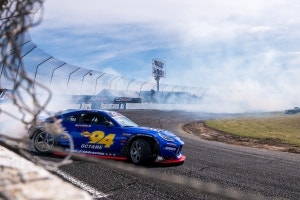
Functionally Wild - 2021+ Ford Bronco 2.7L Performance Intercooler Piping R&D, Part 1 - Stock Review and Design Plans
The Bronco is built for the wilderness. Just a glance at this towering machine makes that apparent. Even the trims not dressed to the nines in the sprawling catalog of off-roading accouterments still have the natural instinct to scamper through most terrains thanks to the well-sorted AWD system and 2.7L powerplant. While this twin-turbo V6 is no slouch, we enthusiasts still have the inherent need to add even more horses to the pack. Cranking up the boost through tunes and turbos is the simplest solution, but other components must be addressed to handle this added power first.

Ford's priority for function becomes truly apparent once you lift the hood on your 2.7L powered Bronco. The intricate maze of tubes and pipes on full display gives us flashbacks to that classic Windows screensaver. Each pipe and component snakes perfectly around each other, creating organized chaos, but all working together in harmony together. This layout, however, does take its toll on the 2.7L's intercooler piping system, which is not conducive to furthering the engine's performance. Luckily, we have a plan to rectify this, but first, we need to take a look at the OEM layout.

For starters, the stock piping design is restrictive, especially on the hot side of the system. These petite pipes only gradually grow from the 29mm at the turbo to the 45mm after these two streams merge, which becomes a bottleneck as the boost increases. After the merger, this air channel needs to step up again, leaving the charged air in an inconsistent relationship with the piping. This design is adequate for a crowded engine bay for calm, daily commutes to the office, but a smoother flow is required for those demanding more from their 2.7L.

On the cold side, the inconsistency continues. From the intercooler to the throttle body, this piping changes inner diameter three separate times, ranging from 55mm to 62mm. The ranges on this side of the system's changes are less severe than the hot side, but keeping the airflow steady is paramount, especially when the volume increases.
The second prong of the Bronco intercooler pipes' shortcomings is the construction. From the factory, these pipes channel charged air using a combination of plastic injection-molded pipes and rubber hoses. While these materials have come a long way over the years, heat and pressure still take their toll on this piping network, leading to cracks, leaks, and a generally frustrating off-roading experience. This risk of runaway boost pressure is only compounded with the addition of increased boost pressures from a performance tune, so naturally, we wanted to solidify this system further.


Our intercooler piping overhaul starts with choosing the right construction. To ensure that our new piping design can meet the demands of increased pressures, we're ditching the plastic and rubber in favor of a few varieties of aluminum. First, we're opting for mandrel-bent sections to keep a smooth and consistent channel for the charged air as it navigates through the engine bay. However, there are some nooks, crannies, and transitions that our mandrel-bent piping isn't the right choice for, so we turned to our casting expertise.

One of the unique features of the 2.7L's intercooling system is the hot-side merger leading to the intercooler. This design reduces the amount of piping in the already cramped engine bay without massive pressure sacrifices, but a fabricated merger won't quite cut it. So, in similar fashion to our update on the Kia Stinger's intercooler piping, we're going to create a cast merger that will retain the improved efficiency that our proposed kit will offer.
The hot-side merger isn't the only part of this piping we're planning to cast. For this piping to return cool charged air to the intake manifold, it needs to snake through a labyrinth, which challenges our objective of increasing flow. Since we would have to shrink the inner diameter to avoid fitment issues, again, we chose the casting route for this section. By planning on this manufacturing process, we're able to create the unique shape needed to perfectly fit through the engine bay while retaining the internal cross-sectional volume throughout. Our engineer, Dan, also designed this section to be oversized in some parts to account for this pipe sucking in its gut for the tight squeeze without sacrificing flow characteristics.


Of course, these pipes would be useless without means of joining them together and adapting to the intercooler. To achieve this, Dan is conscripting an army of tough and application-specific silicone couplers. To keep things consistent through the piping system, we're planning on using our stepped couplers for a smooth interior and reduced turbulence. Adapting to the range of available intercoolers will take the form of two optional straight coupler lengths along with pair of OEM-styled quick disconnect fittings.
These Broncos may be destined for the wilderness, but the demand for bigger power figures isn't only limited to the pavement. In fact, packing some extra grunt sometimes is a necessity for your trip off the grid. Before we can turn up the boost and drop off the radar, we have the plans in place to keep and improve the flow of boost. Make sure you stay tuned for the first look at our prototypes coming soon!
Thanks for Reading!
-Nick




